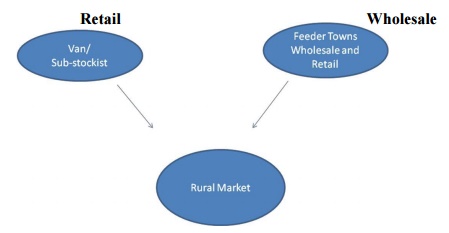Chapter: Business Science : Rural Marketing : Product Distribution
PDS Network

1 Behavior of the Channel
Credit facilities to customers –In
some districts, credit sales account for as high as 60 to 70% of the
total rural business, while in others it is only 15 to 20%. Consumers usually
have a running account, a part of the outstanding dues is cleared every month
but the final settlement takes place at the harvest time.
Pricing by the channel –Sometimes
retailers in interior villages sell at a price higher than the maximum
retail price. They justify doing this on the ground that they spend time and
money to fetch the products from town wholesalers. A town wholesaler may deliberately
cut the price of a fast-moving brand to increase his business.
Reason for stocking a product/brand –Rural
retailers stock a particular item usually because consumers demand it
and to a lesser extent because of because a competitor stocks the item too.
Seasonal pattern of stocking –Seasonal
pattern is probably because the main buying season for rural consumers
is during the harvest and retail stocking of toiletries, cosmetics, ribbons,
bangles, clothes, fertilisers, seeds also follows this pattern.
Information source and influence –Wholesaler
is the most important source of information and also most important
influence on the retailer.
Purchase source –Retailers
in interior areas are not visited by agents of distributors; retailers
go to the nearby town / large feeder village once or twice a month to buy their
stock.
Chanel credit –Small
retailers and retailers in the interior villages must buy in cash, while
large retailers in feeder markets are offered credit.
Purchasing cycles –In
high turnover feeder villages, rural shopkeepers often visit then neighboring
urban wholesale market for their purchases, sometimes as frequently as three to
four times a week. In other areas, where rural shopkeepers depend only on
counter sales and not on wholesale purchases, they may buy once a week or once
a fortnight.
Prevalent Rural Distribution Models

Rural distribution can
broadly be categorized into two models: Smaller companies adopt the wholesale
activation route owing to a lack of viability, whereas companies with sizeable
product baskets adopt the retail route to reach rural markets.
Van Operation:
Stockiest from nearby urban markets cover four to
five rural markets per day. A distance of 60-70 km is covered per day.
They operate mostly on cash basis as per the desired
frequency. They provide better control over distribution.
Sub-stockiest Operation
Gets stock from super stockiest appointed in the
district.
Super stockists typically cover 10-15 sub stockiest
in the district.
The sub-stockiest covers all the outlets in his
rural market like the regular stockiest, by extending credit and services.
Related Topics